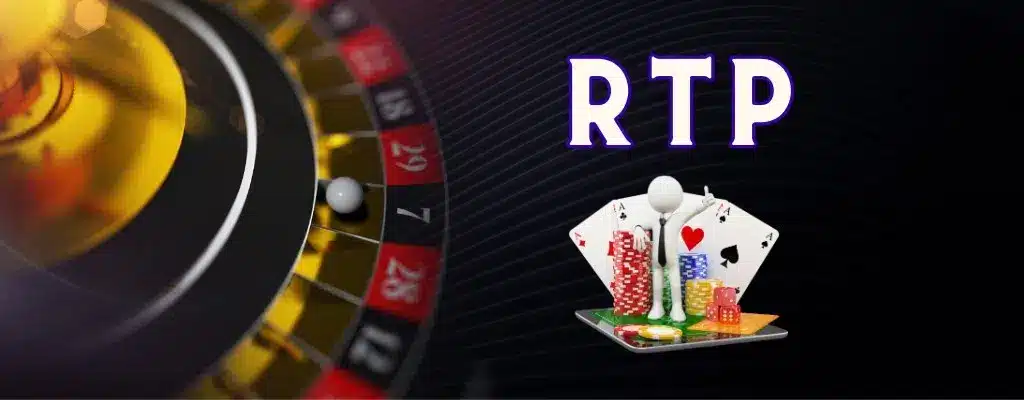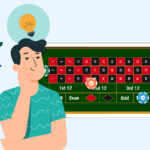Return to Player (RTP) in Online Casinos

Last Updated on February 27, 2025 by Mary Henderson
Greetings, fellow players! We’ll talk about RTP in online casinos today.
Your casino expert (meaning me) has prepared a question for you today. Have you ever wondered what the real odds are when you spin the reel? Is RTP a thing?
Let’s start with what RTP actually is. The Return to Player percentage gives us a clue about how much we can get back from our bets in the long run. It‘s the house’s way of saying: “That’s what you might win back, fella.”
Join me as I break down what RTP really is, what the different RTPs are for different games, how to spot games with the best RTP, and how you can use RTP to play your cards right. It’s time to spill the beans.
What Exactly RTP Is
The term is used by online casinos to help players understand the percentage of wagered money that comes back to them. It’s important to note that it happens over time, not instantly. Why does it count? It helps you understand which games to play by considering how much you could potentially win or lose.
The RTP is calculated by dividing the total amount of money returned to players by the total money wagered. The resulting amount is multiplied by 100, and you get the return rate in percentage.
RTP is the opposite of the house edge. So, if the return rate is 96%, then the house edge is 4%. As easy as that. It’s important to know that RTP doesn’t indicate short-term payouts since it is calculated over a long period of time.
If you somehow doubt the fairness of RTP, you should know that the return rates of games are regularly tested by independent bodies, who ensure that the game’s payouts are 100% fair.
To make it clear, let’s take a slot with an RTP of 96%. When put into practice, it means every $100 wagered should payout $96. The trick is that this isn’t guaranteed for each spin. So, how do you play it right? The secret is to understand how RTP actually works and how it can affect your gaming experience.
RTP vs Volatility: What Is the Difference?
Both concepts are important in online casino games, but they have different roles in helping gamblers understand the rewards and risks of a game. While the RTP shows the typical return over time without focusing on the size or frequency of payouts, volatility shows the risk and reward structure – whether the selected game will pay less often or frequently with big winnings.
For instance, if the game you play has a high RTP but still high volatility, it means that even if it will pay back, say, 97% over time, the wins will still come in less frequent but large rewarding sums rather than regular small payouts.
How to Find Out the RTP
If you play at legitimate casinos, you won’t have a problem with finding the RTP. They are usually transparent when it comes to information about game return percentages. But be aware of the many tricky sites that will try to scam you.
Find the RTP of any game in the game rules or information sections within the site. If not, you could visit the game developer’s site, search for the game, and find all the details.
Does searching sound like much work? I’ve got you covered! Take a look at this table of the average RTP for different games:
How to Use RTP in Your Strategy
Take your gambling experience at online casinos to the next level by implementing RTP into your game strategy. How exactly do you do that?
I’ve prepared a list of useful tips on how to use your knowledge about RTP and turn the odds in your favour.
Choose High RTP Games. Select games with a higher return-to-player percentage. Theoretically speaking, they offer better long-term returns than other games. But don’t expect instant and often wins. The odds will work in your favour in the long run.
Consider Other Factors. Besides RTP, factors like game volatility, entertainment, or theme play a great deal in the overall experience. Say a game has lower returns but is less volatile and more engaging. It depends on your gaming style. If you asked me, I wouldn’t focus on RTP only.
Set a Budget. Regardless of how high the RTP is, don’t stick to this alone. Make sure to set a budget and stay within limits no matter what. Then, you’ll surely avoid unexpected losses.
Play High-RTP Games to Wager the Bonus. If you claim a bonus and you need to meet the wagering requirement, choose games with higher return rates out of those that count towards the wagering requirement.
Set Reasonable Expectations. As I already mentioned, playing high-RTP games doesn’t mean you’ll walk away with a big win every time. The win rate is calculated over thousands of sessions.
Keep Pace with Updates. It’s good to know that game developers regularly update their games’ return rates without making them public. My advice is to periodically check out for changes, at least for the games you play.
Claim Bonuses. I won’t say it’s a rule, but many high-return games offer bonuses. Keep an eye out for such opportunities. You could use the extra cash or free spins to increase your potential return.
Play in the Demo Mode. Test the game first and see how the RTP works in practice by playing the free version of the game before getting into real business.
Don’t Rely on RTP Only. I agree with you; RTP is important, but you cannot rely on it alone. It should be a combination of RTP, volatility, game mathematics, managing the bankroll, and playing responsibly.
To sum up, RTP is the secret tool of smart casino players. You’re literally given a glimpse into how much a game can pay back, but remember – in the long run. While it doesn’t guarantee a win in your next session, it does help you choose a casino game that matches your gaming style and expectations.
I think that being well-informed is halfway to success. So, now that you know a thing or two about RTP, are you ready to test them out?
- Top 7 Play n Go Slots in Canada - October 1, 2025
- My Favourite Quickspin Slots to Play in 2025 - September 14, 2025
- Old-School Fun with Modern Wins? Try These Best Retro Slots - September 14, 2025









